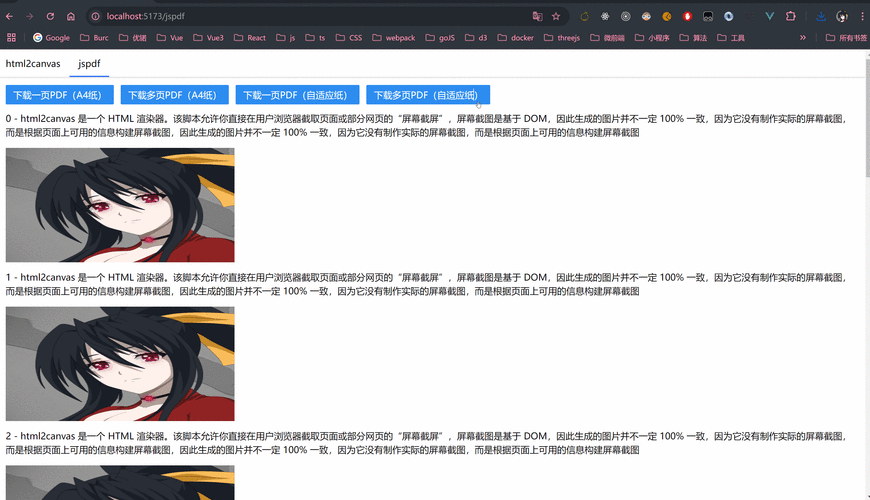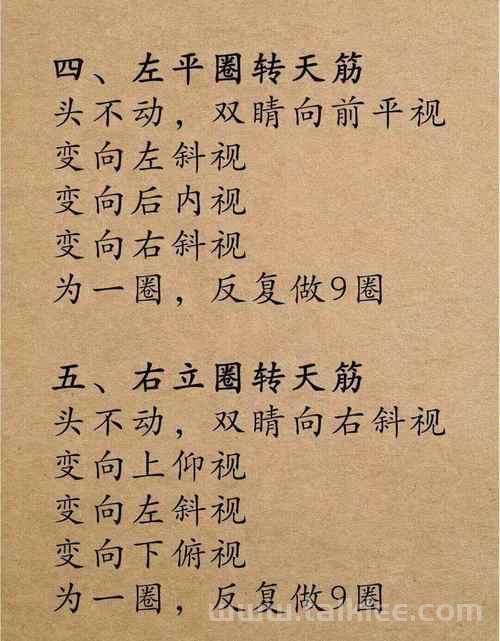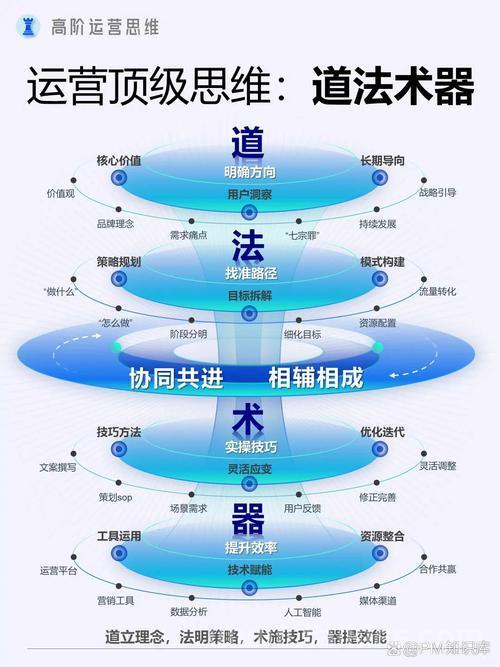前端取经路——JavaScript修炼:悟空的九大心法
大家好,我是老十三,一名前端开发工程师。JavaScript如同孙悟空的七十二变,变化多端却又充满威力。本篇文章我将带你攻克JS中最令人头疼的九大难题,从闭包陷阱到原型链继承,从异步编程到性能优化。每个难题都配有实战代码,手把手教你化解这些JS"妖怪"。无论你是否已入门,这些心法都能帮你在前端修行路上少走弯路,早日修成正果。
修得CSS真身后,是时候踏入JavaScript的修炼场,领悟悟空的九大心法。这些心法看似简单,实则玄妙,掌握它们,你将拥有应对前端各种妖魔鬼怪的金刚不坏之躯。
🐒 第一难:原型链继承 - 猴王的传承之道
问题:为什么JavaScript中对象能调用不属于自身的方法?这种"从无到有"的魔法是如何实现的?
深度技术:
JavaScript的原型链继承是其最具特色的设计,不同于传统的类继承,它通过原型对象实现属性和方法的传递。理解原型链,关键在于掌握__proto__、prototype和constructor三者的关系。
原型链的精髓在于"委托"而非"复制",这种设计思想既节省内存,又提供了极大的灵活性,但也带来了this指向等难题。ES6的类语法虽然使继承更易用,但底层仍是基于原型链实现。
代码示例:
// 传统原型继承方式
function Animal(name) {
this.name = name;
}
Animal.prototype.speak = function() {
return `${this.name} makes a noise.`;
};
function Monkey(name, trick) {
// 调用父构造函数
Animal.call(this, name);
this.trick = trick;
}
// 建立原型链
Monkey.prototype = Object.create(Animal.prototype);
// 修复构造函数指向
Monkey.prototype.constructor = Monkey;
// 添加猴子特有方法
Monkey.prototype.doTrick = function() {
return `${this.name} performs ${this.trick}!`;
};
// 覆盖父类方法
Monkey.prototype.speak = function() {
return `${this.name} says: I know ${this.trick}!`;
};
// ES6类语法实现同样的继承
class ModernAnimal {
constructor(name) {
this.name = name;
}
speak() {
return `${this.name} makes a noise.`;
}
}
class ModernMonkey extends ModernAnimal {
constructor(name, trick) {
super(name);
this.trick = trick;
}
doTrick() {
return `${this.name} performs ${this.trick}!`;
}
speak() {
return `${this.name} says: I know ${this.trick}!`;
}
}
// 使用示例
const wukong = new Monkey('Sun Wukong', '72 transformations');
console.log(wukong.speak()); // "Sun Wukong says: I know 72 transformations!"
console.log(wukong.doTrick()); // "Sun Wukong performs 72 transformations!"
🔒 第二难:闭包陷阱 - 封印"妖气"的密室
问题:函数为什么能"记住"它的创建环境?闭包是强大法宝还是内存泄漏的源头?
深度技术:
闭包是JavaScript中最强大也最容易被误用的特性,它允许函数访问并保留其词法作用域,即使函数在其他作用域中执行。理解闭包,需要掌握词法作用域、执行上下文和垃圾回收机制。
闭包的应用极为广泛,从模块化模式、函数柯里化到React的状态管理,处处可见其身影。但不当使用会导致内存泄漏,特别是在事件处理和定时器中更需警惕。
代码示例:
// 基础闭包示例
function createCounter() {
// 私有变量,外部无法直接访问
let count = 0;
// 返回闭包函数
return {
increment() {
return ++count;
},
decrement() {
return --count;
},
getValue() {
return count;
}
};
}
const counter = createCounter();
console.log(counter.increment()); // 1
console.log(counter.increment()); // 2
console.log(counter.getValue()); // 2
// 闭包陷阱:意外的内存泄漏
function setupHandler(element) {
// 这里有一个大数组
const hugeData = new Array(10000).fill('🐒');
// 错误写法:事件处理器会持有hugeData的引用
element.addEventListener('click', function() {
console.log(hugeData.length); // hugeData被引用,无法释放
});
// 正确写法:只保留需要的数据
const dataLength = hugeData.length;
element.addEventListener('click', function() {
console.log(dataLength); // 只保留了length值,hugeData可以被释放
});
}
// 闭包应用:函数柯里化(部分应用)
function multiply(a, b) {
return a * b;
}
function curry(fn) {
return function(a) {
return function(b) {
return fn(a, b);
};
};
}
const curriedMultiply = curry(multiply);
const double = curriedMultiply(2); // 闭包记住了a=2
console.log(double(5)); // 10
⏳ 第三难:异步编程 - Promise从入门到"大乘"
问题:如何驯服JavaScript的异步"猴性"?从回调地狱到async/await的进化之路有何玄机?
深度技术:
JavaScript的异步编程是前端修行的核心难关。从最初的回调函数,到Promise对象,再到async/await语法糖,异步处理范式不断进化。
理解异步的关键在于Event Loop(事件循环)机制,它决定了JavaScript引擎如何调度任务。掌握Promise的链式调用、错误处理和并发控制,是跨越"异步之坑"的必要法门。
代码示例:
// 回调地狱 - "五指山"困境
fetchUserData(userId, function(userData) {
fetchUserPosts(userData.id, function(posts) {
fetchPostComments(posts[0].id, function(comments) {
fetchCommentAuthor(comments[0].authorId, function(author) {
console.log(author.name);
// 层层嵌套,难以维护
}, handleError);
}, handleError);
}, handleError);
}, handleError);
// Promise - "金箍棒"出世
fetchUserData(userId)
.then(userData => fetchUserPosts(userData.id))
.then(posts => fetchPostComments(posts[0].id))
.then(comments => fetchCommentAuthor(comments[0].authorId))
.then(author => console.log(author.name))
.catch(error => handleError(error));
// Async/Await - "筋斗云"境界
async function getUserAuthor(userId) {
try {
const userData = await fetchUserData(userId);
const posts = await fetchUserPosts(userData.id);
const comments = await fetchPostComments(posts[0].id);
const author = await fetchCommentAuthor(comments[0].authorId);
return author.name;
} catch (error) {
handleError(error);
}
}
// Promise并发控制 - "一气化三清"
async function fetchAllUsersData(userIds) {
// 并行请求所有用户数据
const promises = userIds.map(id => fetchUserData(id));
// 等待所有请求完成
const usersData = await Promise.all(promises);
return usersData;
}
// Promise竞争 - "火眼金睛"选取最快
async function fetchFromFastestSource(resourceId) {
try {
const result = await Promise.race([
fetchFromAPI1(resourceId),
fetchFromAPI2(resourceId),
fetchFromCache(resourceId)
]);
return result;
} catch (error) {
// 即使最快的失败了,其他请求仍在进行
console.error('Fastest source failed:', error);
// 可以继续等待其他结果
}
}
// Promise取消 - "定身法"
function fetchWithTimeout(url, ms) {
const controller = new AbortController();
const { signal } = controller;
// 设置超时定时器
const timeout = setTimeout(() => controller.abort(), ms);
return fetch(url, { signal })
.then(response => {
clearTimeout(timeout);
return response;
})
.catch(error => {
if (error.name === 'AbortError') {
throw new Error('Request timed out');
}
throw error;
});
}
🧘 第四难:this指向 - JavaScript的"紧箍咒"
问题:为什么有时this指向window,有时又指向调用者?如何摆脱this带来的"头痛"?
深度技术:
this是JavaScript中最令人困惑的概念之一,它不是编译时绑定,而是运行时绑定,取决于函数的调用方式。理解this的关键是掌握四种绑定规则:默认绑定、隐式绑定、显式绑定和new绑定。
箭头函数与传统函数对this的处理方式不同,它没有自己的this,而是继承外围作用域的this值。这种特性使箭头函数特别适合回调函数和事件处理器。
代码示例:
// 默认绑定:非严格模式下指向全局对象,严格模式下是undefined
function showThis() {
console.log(this);
}
showThis(); // window(浏览器中)
// 隐式绑定:this指向调用该方法的对象
const monkey = {
name: 'Wukong',
showName() {
console.log(this.name);
}
};
monkey.showName(); // "Wukong"
// 隐式绑定丢失的情况
const showName = monkey.showName;
showName(); // undefined,this指向了全局对象
// 显式绑定:使用call、apply和bind
function introduce(description) {
console.log(`${this.name} is ${description}`);
}
introduce.call(monkey, 'the Monkey King'); // "Wukong is the Monkey King"
introduce.apply(monkey, ['the Monkey King']); // "Wukong is the Monkey King"
const introduceMonkey = introduce.bind(monkey);
introduceMonkey('a powerful warrior'); // "Wukong is a powerful warrior"
// new绑定:构造函数中的this指向新创建的对象
function Disciple(name) {
this.name = name;
this.introduce = function() {
console.log(`I am ${this.name}`);
};
}
const wukong = new Disciple('Sun Wukong');
wukong.introduce(); // "I am Sun Wukong"
// 箭头函数:this继承自外围作用域
const tang = {
name: 'Tang Monk',
disciples: ['Sun Wukong', 'Zhu Bajie', 'Sha Wujing'],
// 传统函数的this问题
showDisciplesTraditional: function() {
this.disciples.forEach(function(disciple) {
console.log(`${this.name}'s disciple: ${disciple}`); // this.name是undefined
});
},
// 使用箭头函数解决
showDisciplesArrow: function() {
this.disciples.forEach(disciple => {
console.log(`${this.name}'s disciple: ${disciple}`); // 正确输出
});
}
};
tang.showDisciplesTraditional(); // "undefined's disciple: Sun Wukong" 等
tang.showDisciplesArrow(); // "Tang Monk's disciple: Sun Wukong" 等
🔄 第五难:事件循环 - 宏任务与微任务的修行循环
问题:JavaScript如何在单线程环境下处理并发任务?为什么Promise比setTimeout先执行?
深度技术:
事件循环(Event Loop)是JavaScript运行时环境的核心机制,它解释了异步操作的执行顺序。理解事件循环,需要掌握调用栈、任务队列、微任务队列和渲染过程的交互方式。
事件循环的执行顺序遵循:同步代码 → 微任务(Promise, MutationObserver) → 宏任务(setTimeout, setInterval, I/O)的模式。这种机制保证了JavaScript的非阻塞特性,但也带来了定时器不精确等问题。
代码示例:
console.log('1. Script start'); // 同步代码
setTimeout(() => {
console.log('2. setTimeout callback'); // 宏任务
}, 0);
Promise.resolve()
.then(() => {
console.log('3. Promise.then 1'); // 微任务
// 在微任务中添加的新微任务
Promise.resolve().then(() => {
console.log('4. Promise.then nested');
});
})
.then(() => {
console.log('5. Promise.then 2'); // 微任务链
});
console.log('6. Script end'); // 同步代码
// 输出顺序:
// 1. Script start
// 6. Script end
// 3. Promise.then 1
// 4. Promise.then nested
// 5. Promise.then 2
// 2. setTimeout callback
// 宏任务与微任务交互
async function demo() {
console.log('A. Start');
// 创建宏任务
setTimeout(() => {
console.log('B. setTimeout 1');
// 宏任务中的Promise(微任务)
Promise.resolve().then(() => {
console.log('C. Promise in setTimeout');
});
// 宏任务中的宏任务
setTimeout(() => {
console.log('D. Nested setTimeout');
}, 0);
}, 0);
// 创建微任务
await Promise.resolve();
console.log('E. After await');
// 微任务之后的同步代码
console.log('F. End');
}
demo();
// 输出顺序:
// A. Start
// E. After await
// F. End
// B. setTimeout 1
// C. Promise in setTimeout
// D. Nested setTimeout
// 结合动画帧的高级例子
function animationWorkflow() {
console.log('1. Start animation');
// 安排在下一帧前执行
requestAnimationFrame(() => {
console.log('2. Animation frame');
// 执行昂贵的DOM操作
document.body.style.backgroundColor = 'red';
// 微任务:在当前帧的DOM改变后但渲染前执行
Promise.resolve().then(() => {
console.log('3. Promise after RAF');
document.body.style.backgroundColor = 'blue';
});
});
// 安排在渲染后执行
setTimeout(() => {
console.log('4. Post-render operations');
}, 0);
}
🧙♂️ 第六难:函数式编程 - 纯函数的"七十二变"
问题:为什么现代JavaScript越来越喜欢函数式编程?如何用纯函数改造代码,获得更好的可测试性和可维护性?
深度技术:
函数式编程是一种编程范式,它将计算过程视为数学函数的求值,避免状态变化和可变数据。JavaScript虽不是纯函数式语言,但支持高阶函数、闭包等函数式特性。
函数式编程的核心原则包括:纯函数、不可变数据、函数组合和避免副作用。掌握这些原则,能编写出更易于测试、调试和并行化的代码。
代码示例:
// 命令式编程:充满副作用
let disciples = ['Sun Wukong', 'Zhu Bajie', 'Sha Wujing'];
let powerLevels = [100, 80, 70];
function increasePower(name, amount) {
const index = disciples.indexOf(name);
if (index !== -1) {
powerLevels[index] += amount; // 修改外部状态
}
}
increasePower('Sun Wukong', 20);
console.log(powerLevels); // [120, 80, 70]
// 函数式编程:纯函数与不可变数据
const discipleData = [
{ name: 'Sun Wukong', power: 100 },
{ name: 'Zhu Bajie', power: 80 },
{ name: 'Sha Wujing', power: 70 }
];
// 纯函数:无副作用,相同输入始终产生相同输出
function increasePowerPure(disciples, name, amount) {
return disciples.map(disciple =>
disciple.name === name
? { ...disciple, power: disciple.power + amount }
: disciple
);
}
const newDiscipleData = increasePowerPure(discipleData, 'Sun Wukong', 20);
console.log(newDiscipleData[0].power); // 120
console.log(discipleData[0].power); // 仍然是100,原数据未变
// 函数组合:构建复杂逻辑
const pipe = (...fns) => x => fns.reduce((v, f) => f(v), x);
const addPower = (amount) => disciples =>
increasePowerPure(disciples, 'Sun Wukong', amount);
const filterStrongDisciples = (minPower) => disciples =>
disciples.filter(d => d.power >= minPower);
const getNames = disciples => disciples.map(d => d.name);
// 组合多个操作
const getStrongDisciplesAfterTraining = pipe(
addPower(20),
filterStrongDisciples(90),
getNames
);
console.log(getStrongDisciplesAfterTraining(discipleData)); // ['Sun Wukong']
// 柯里化:转换多参数函数为嵌套单参数函数
const curry = (fn) => {
const arity = fn.length;
return function curried(...args) {
if (args.length >= arity) {
return fn.apply(this, args);
}
return (...moreArgs) => curried.apply(this, [...args, ...moreArgs]);
};
};
const add = (a, b, c) => a + b + c;
const curriedAdd = curry(add);
console.log(curriedAdd(1)(2)(3)); // 6
console.log(curriedAdd(1, 2)(3)); // 6
console.log(curriedAdd(1)(2, 3)); // 6
🍭 第七难:ES6+语法糖 - 现代JS的法宝大全
问题:ES6+引入的新特性如何帮助我们写出更简洁、更强大的代码?这些"语法糖"背后有哪些陷阱?
深度技术:
ES6及以后的JavaScript版本带来了大量语法糖和新特性,从解构赋值、扩展运算符到可选链和空值合并,这些特性极大地提升了开发效率和代码可读性。
然而,这些语法糖背后往往隐藏着复杂的实现机制,如果不了解其原理,可能导致代码性能和行为出现意外。掌握这些特性的内部工作方式,才能真正发挥其威力。
代码示例:
// 解构赋值:提取对象和数组中的值
const journey = {
leader: 'Tang Monk',
disciples: ['Sun Wukong', 'Zhu Bajie', 'Sha Wujing'],
destination: 'Western Paradise',
distance: 108000
};
// 对象解构
const { leader: monk, disciples, destination } = journey;
console.log(monk); // 'Tang Monk'
// 数组解构
const [firstDisciple, ...otherDisciples] = disciples;
console.log(firstDisciple); // 'Sun Wukong'
console.log(otherDisciples); // ['Zhu Bajie', 'Sha Wujing']
// 默认值与重命名
const { distance: journeyLength = 0, difficulty = 'high' } = journey;
console.log(journeyLength); // 108000
console.log(difficulty); // 'high'(使用默认值)
// 嵌套解构
const team = {
leader: { name: 'Tang Monk', role: 'guide' },
members: [
{ name: 'Sun Wukong', power: 100 },
{ name: 'Zhu Bajie', power: 80 }
]
};
const { leader: { name: leaderName }, members: [{ power: firstMemberPower }] } = team;
console.log(leaderName); // 'Tang Monk'
console.log(firstMemberPower); // 100
// 扩展运算符:对象与数组的浅复制与合并
const baseCharacter = { health: 100, mana: 50 };
const wukong = { ...baseCharacter, name: 'Sun Wukong', power: 'Transformation' };
// 注意:这是浅复制
const baseWithItems = { ...baseCharacter, items: ['staff', 'cloud'] };
baseWithItems.items.push('gold ring');
console.log(baseCharacter.items); // undefined,未受影响
// 可选链与空值合并:安全地访问深度嵌套属性
const config = {
user: {
// preferences缺失
}
};
// 传统方式:需要多层检查
const theme = config.user && config.user.preferences && config.user.preferences.theme || 'default';
// 可选链:简洁安全
const newTheme = config.user?.preferences?.theme ?? 'default';
console.log(newTheme); // 'default'
// ?? 与 || 的区别
console.log(0 || 'fallback'); // 'fallback'(0被视为假值)
console.log(0 ?? 'fallback'); // 0(只有null和undefined才会触发后者)
// 模板字面量:高级用法
const highlight = (strings, ...values) => {
return strings.reduce((result, str, i) => {
const value = values[i] || '';
return `${result}${str}${value}`;
}, '');
};
const name = 'Sun Wukong';
const power = 'Fiery Eyes';
// 标签模板字面量
const result = highlight`The great ${name} has ${power}!`;
console.log(result);
// "The great Sun Wukong has Fiery Eyes!"
🛡️ 第八难:类型系统 - TypeScript的护体神功
问题:JavaScript的动态类型为何会导致难以发现的bug?如何利用TypeScript构建可靠的大型应用?
深度技术:
TypeScript作为JavaScript的超集,通过静态类型检查提供了更安全的开发体验。它不仅能捕获常见错误,还能增强代码的可读性和IDE的智能提示。
TypeScript的高级类型系统支持泛型、联合类型、交叉类型、条件类型等,能够精确建模复杂的业务逻辑。理解这些类型概念,对于构建大型前端应用至关重要。
代码示例:
// 基础类型与接口
interface Disciple {
name: string;
power: number;
skills: string[];
transform?: (form: string) => boolean; // 可选方法
}
// 实现接口
const sunWukong: Disciple = {
name: "Sun Wukong",
power: 100,
skills: ["Shape-shifting", "Cloud-riding"],
transform(form) {
console.log(`Transformed into ${form}`);
return true;
}
};
// 泛型:创建可复用的组件
interface Response {
data: T;
status: number;
message: string;
}
// 泛型函数
function fetchData(url: string): Promise {
return fetch(url)
.then(response => response.json());
}
// 使用泛型
interface User {
id: number;
name: string;
}
fetchData("/api/user/1")
.then(response => {
const user = response.data; // TypeScript知道user是User类型
console.log(user.name);
});
// 联合类型与类型守卫
type MagicalItem =
| { type: "weapon"; damage: number; name: string }
| { type: "armor"; defense: number; name: string }
| { type: "potion"; effect: "heal" | "strength"; value: number };
// 类型守卫函数
function isWeapon(item: MagicalItem): item is { type: "weapon"; damage: number; name: string } {
return item.type === "weapon";
}
// 使用类型守卫
function useItem(item: MagicalItem) {
console.log(`Using ${item.name}`);
if (isWeapon(item)) {
// TypeScript知道这里item是武器
console.log(`Dealing ${item.damage} damage`);
} else if (item.type === "armor") {
console.log(`Adding ${item.defense} defense`);
} else {
// 穷尽性检查:TypeScript确保所有类型都被处理
console.log(`Gaining ${item.effect} effect of ${item.value}`);
}
}
// 高级类型:映射类型与条件类型
// 将对象所有属性变为只读
type ReadOnly = {
readonly [P in keyof T]: T[P];
};
const readOnlyWukong: ReadOnly = {
name: "Sun Wukong",
power: 100,
skills: ["Shape-shifting"]
};
// readOnlyWukong.power = 200; // 错误:无法分配到"power",因为它是只读属性
// 条件类型:根据条件选择不同的类型
type ExtractPowerType = T extends { power: infer P } ? P : never;
// 从Disciple类型中提取power的类型
type PowerType = ExtractPowerType; // number
// Utility类型组合使用
interface Quest {
id: number;
name: string;
difficulty: "easy" | "medium" | "hard";
rewards: {
gold: number;
experience: number;
items?: string[];
};
}
// 只选取部分属性
type QuestSummary = Pick;
// 使所有属性可选
type PartialQuest = Partial;
// 创建不可变的深度只读对象
type DeepReadonly = {
readonly [P in keyof T]: T[P] extends object ? DeepReadonly : T[P];
};
const immutableQuest: DeepReadonly = {
id: 1,
name: "Journey to the West",
difficulty: "hard",
rewards: {
gold: 5000,
experience: 10000
}
};
// immutableQuest.rewards.gold = 6000; // 错误:无法分配到"gold",因为它是只读属性
🚀 第九难:V8优化 - 让代码如"筋斗云"般迅捷
问题:为什么看似等价的JavaScript代码,性能却天差地别?如何编写V8引擎最喜欢的代码?
深度技术:
JavaScript性能优化需要了解V8引擎的工作原理,包括JIT编译、隐藏类、内联缓存等概念。V8通过多层编译优化(Ignition解释器和TurboFan优化编译器),将JavaScript转换为高效的机器码。
编写V8友好的代码,关键在于保持对象形状稳定、避免类型变化、理解属性访问优化和合理使用内存。这些优化技巧可以使应用性能提升数倍。
代码示例:
// 对象形状(隐藏类)优化
// 糟糕的做法:动态添加属性,导致创建多个隐藏类
function BadMonkey(name) {
this.name = name;
// 后续动态添加属性
if (name === 'Sun Wukong') {
this.power = 100;
} else {
this.intelligence = 80;
}
}
// 优化做法:始终使用相同的属性初始化顺序
function GoodMonkey(name) {
this.name = name;
this.power = name === 'Sun Wukong' ? 100 : 60;
this.intelligence = name === 'Sun Wukong' ? 90 : 80;
}
// 函数优化
// 多态函数很难被优化
function polymorphicCalculate(obj) {
// 这个函数被不同类型的obj调用
return obj.value * 2;
}
// 分离为单态函数更易优化
function calculateForNumber(num) {
return num * 2;
}
function calculateForObject(obj) {
return obj.value * 2;
}
// 避免重度依赖参数类型检查的函数
function badAdd(a, b) {
if (typeof a === 'string' || typeof b === 'string') {
return String(a) + String(b);
}
return a + b;
}
// 数组优化
// 避免处理混合类型数组
const mixedArray = [1, 'two', {three: 3}, 4]; // 性能较差
// 使用类型一致的数组
const numbersArray = [1, 2, 3, 4]; // 性能更好
const objectsArray = [{value: 1}, {value: 2}]; // 性能更好
// 避免数组孔洞
const sparseArray = [];
sparseArray[0] = 1;
sparseArray[10] = 10; // 创建"稀疏"数组,性能较差
// 性能测量示例
function benchmark(fn, iterations = 1000000) {
const start = performance.now();
for (let i = 0; i
取经感悟
JavaScript的九大心法,如同悟空的七十二变,学会了就能应对各种前端妖魔。从原型链的继承之道,到异步编程的筋斗云,再到V8引擎的性能优化,每一难都是修炼的重要台阶。
请记住,JavaScript的强大在于其灵活性,但灵活往往伴随着复杂。真正的大师不在于掌握所有API,而在于理解语言的核心机制,以不变应万变。
下一站,我们将跟随三藏法师踏入DOM的修行之路,面对更加接近实战的九道试炼。
你在JavaScript修行路上遇到过哪些难关?欢迎在评论区分享你的"心法秘籍"!







